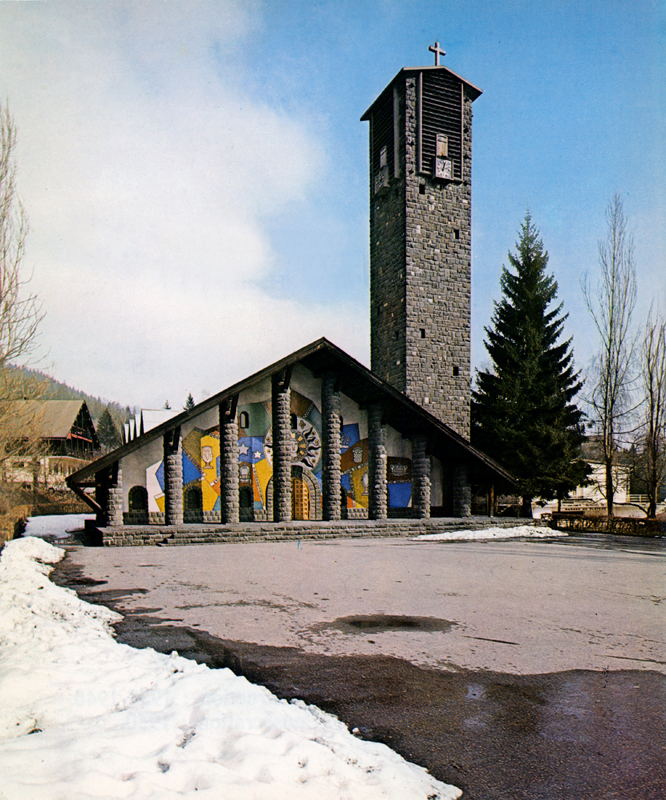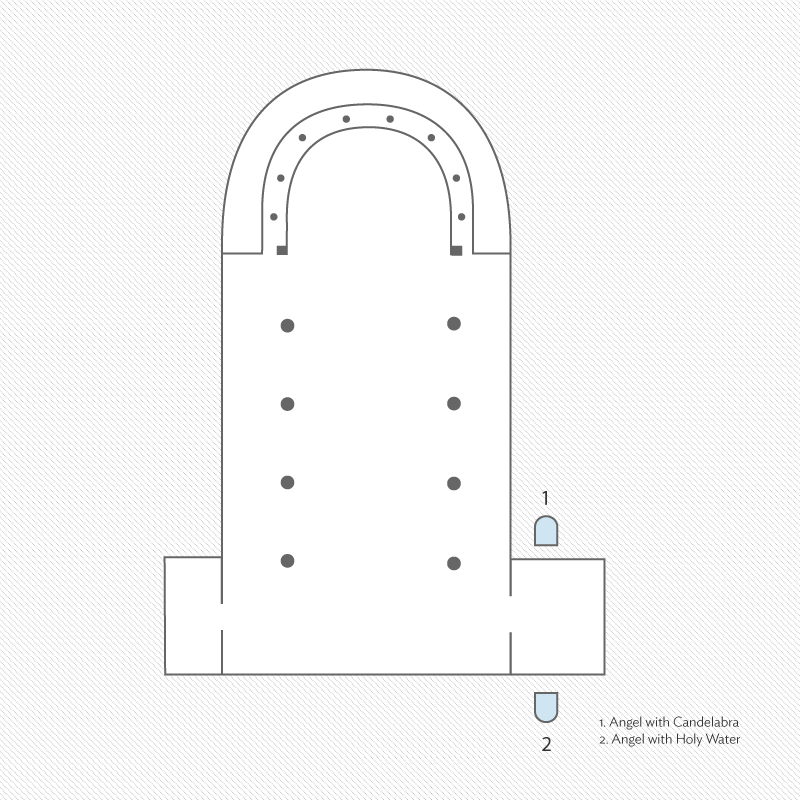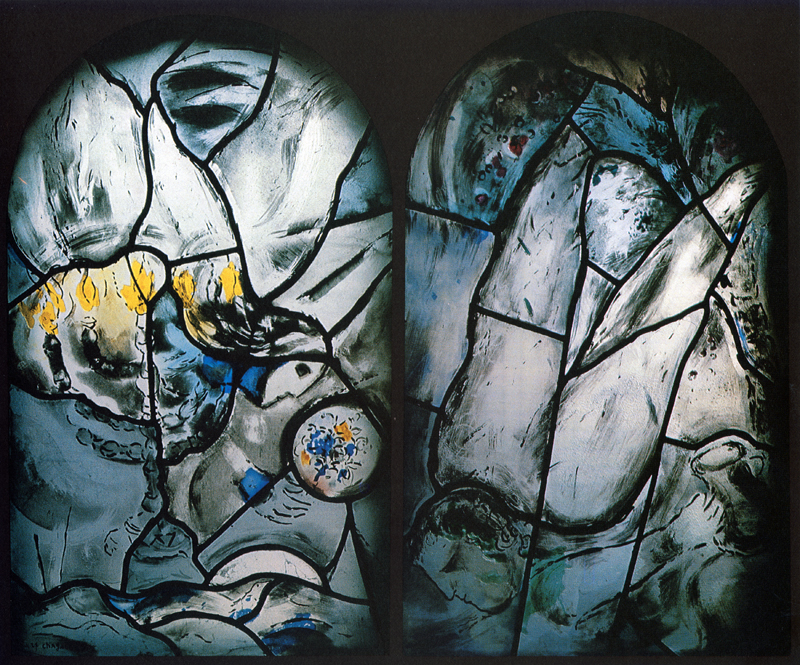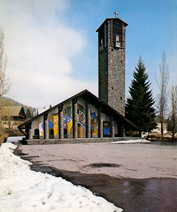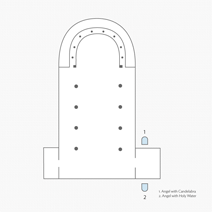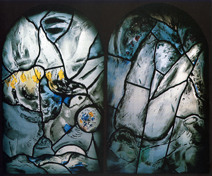


CHAGALL and Stained Glass
In 1956 Chagall received a commission for his first stained-glass project from Father Marie-Alain Couturier of the Notre-Dame-de-Toute-Grâce church in Plateau d'Assy, France. Joining an artistic program that included the work of Pierre Bonnard, Georges Braque, Fernand Léger, Henri Matisse, and Georges Rouault, he produced a new design for the baptistery that featured a ceramic mural, two bas-relief sculptures, and two stained-glass windows. Made with the master glassworker Paul Bony, Chagall's windows work together to represent the rite of baptism through its common symbols—fire and a small dove (a symbol of the Holy Spirit) in Angel with Candelabra, and a jug of water carried by the angel in Angel with Holy Waters.
